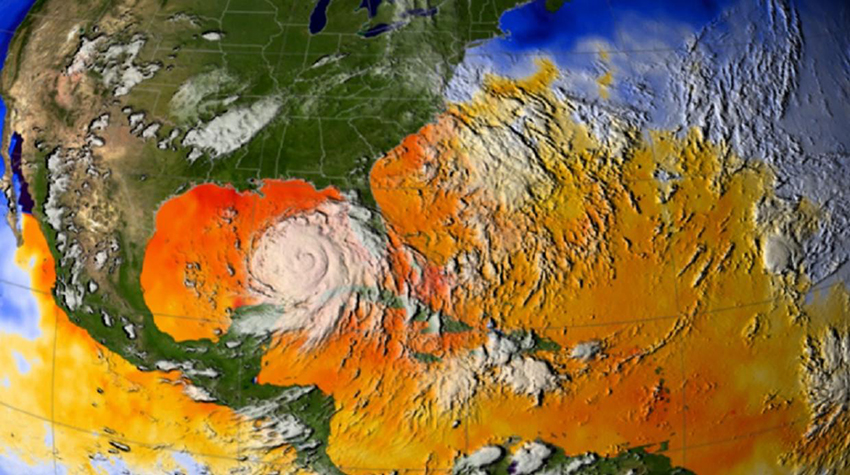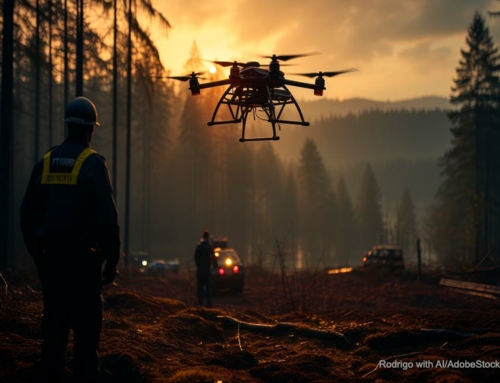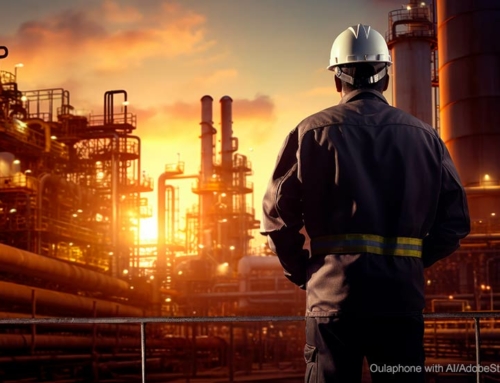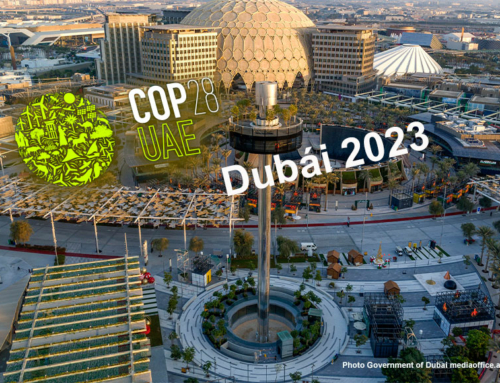There is no evidence on the relationship between hurricanes and global warming, but there are some suspicions based on certain facts
There are mixed views on the relationship between global warming and hurricanes. So far, no evidence has been found to support this relationship. Whenever there is an extraordinary phenomenon that is supposed to be related to climate change, a precedent occurs, often 50, 100 or more years ago, when global warming, the main factor in climate change, was not a issue. However, with the recent Hurricane Irma (Sep-2017), there was a fact that had never happened. For the first time a cyclone acquired category 5 in the Atlantic Ocean, before reaching the Caribbean. As if that were not enough, the phenomenon was repeated in the same month through Hurricane Maria. This unprecedented pair of category 5 hurricanes in the Atlantic has raised suspicions that the intensification of hurricanes does have to do with global warming.
The opinion of scientific authorities on the subject
The Geophysical Fluid Dynamics Laboratory (GFDL), working in cooperation with the United States National Oceanic and Atmospheric Administration (NOAA), whose mission is “to promote scientific understanding of the climate and its natural and anthropogenic variations and impacts, as well as improving NOAA’s predictive capabilities through the development and use of computer models of the Earth System, said: “it is premature to conclude that human activities – and in particular the greenhouse gas emissions that cause global warming – have had a detectable impact on the Atlantic hurricane or global tropical cyclonic activity.
What these authorities say about the intensification of hurricanes in the future
The above-mentioned institutes affirm that “anthropogenic warming at the end of the 21st century will probably make tropical cyclones more intense around the world …”, and refer to a model that projects an increase of 2% and 11%. And they add that “this change would imply an even greater percentage increase in destructive potential by storm, assuming that the size of storms would not be reduced.” This is not good news and requires to paid more attention to the Paris Agreement, and its firm implementation.
What is a hurricane and how does it originate?
A hurricane is a cyclone, a wind of great force that forms a whirlwind and turns in large and fast circles. For a cyclone to be classified as hurricane at least it must have a rotational speed of 119 km/h or 74 mph. Typically a hurricane originates in the tropics and, since its formation, in most opportunities, begins to expand its diameter and speed. These cyclones start when a series of thunderstorms move over the warm waters of the oceans. The hot air of the storm combines with the heat of the surface of the water and begins to rise. This produces a low pressure on the sea surface, and winds that move in opposite directions cause the storm to start spinning. The rise of warm air begins to affect the high pressure of the higher areas of the atmosphere, causing that pressure to decrease. As a result, the air rises faster and faster, drawing more warm air from the surface of the sea and absorbing cooler, drier air from above, pushing it down. As the storm moves on the water, it is fed more moisture and heat. The wind speed increases as the air is drawn through the low-pressure center. After a while the tropical depression becomes a tropical storm and finally a hurricane and the eye is formed, a center of calm winds, surrounded by a wall of intense winds and storms that produce great bands of precipitation.
Differences between a tropical depression, a tropical storm, a hurricane and a typhoon
A tropical depression is a tropical cyclone with sustained surface winds of less than 17 meters per second or 63 km / h or 39 mph. A tropical storm is a tropical cyclone with sustained surface winds greater than 17 meters per second, that is, greater than 63 km / h or 39 mph. To move to the category of hurricane must develop a speed of at least 119 km / h or 74 mph.
Origin and utility of the Saffir-Simpson scale
The Saffir-Simpson Hurricane Scale is a chart that classifies tropical cyclones according to wind strength, developed in 1969 by civil engineer Herbert Saffir, a member of a UN commission. The scale consists of five levels, based on the speed of the winds, also related to damage to buildings. Saffir ceded the scale to the National Hurricane Center in the United States. Sometime later, Simpson, director of that entity, improved the scale by adding waves and flood effects. However, the Saffir-Simpson scale does not consider the amount of precipitation or the location of the winds, which means that a category 3 hurricane that covers a large city can cause more damage than a category 5 hurricane that affect an open or sparsely populated area.
Saffir-Simpson Wind Range
Category 1: 119-153 km / h – 74-95 mph / No damage to the structures of the buildings.
Category 2: 154-177 km / h – 96-110 mph / Damage to roofs, doors and windows.
Category 3: 178-209 km / h – 111-130 mph / Structural damage in small buildings.
Category 4: 210-249 km / h – 131- 155 mph / Generalized damage to protective structures.
Category 5: 250+ km / h – 156+ mph / Destruction of complete roofs in some buildings.
Pilots, anonymous heroes flying into the eye of hurricanes
To measure the speed of a hurricane, “hurricane hunters” aircraft are used, whose pilots travel to the eye of the hurricane and release small probes to make such measurements. NASA has planes with flight autonomy of more than 28 hours, which can rise to 18 km in height, from where they fall into the eye of the storm to release such devices. These are of cylindrical form, of about 30 cm by 15 cm, that can measure a series of values ​​besides the temperature and intensity of the wind. These data are collected by equipment installed on the aircraft, which are processed by the data and sent in real time to the National Hurricane Center for publication and location on the Saffir-Simpson scale.
The method for choosing names of hurricanes has undergone changes over time
At the beginning of century XIX they were named to the hurricanes according to the name of the saint of the day in which the cyclone manifested its greater devastation. At the end of the 19th century, the Australian meteorologist Clement Wragge named one of these storms with a female name, while retaining only biblical names. In 1953, in the United States they decided to choose any name, but always of woman. In 1979, the World Meteorological Organization and the United States Meteorological Service, to avoid problems with feminists, decided to alternate female and male names and thus ended the sexist controversy. Since then each year a list is prepared, which is repeated every 6 years, in alphabetical order, starting each year with the letter “A”. So, we could have: Alex, Betty, Charles, Diana, Edward, etc. Finally, there is an agreement to exclude the names of catastrophic cyclones, which have caused great deaths and devastation.
The most devastating hurricanes
Hurricane Andrew, in 1992, has been one of the most devastating hurricanes in the United States. It lasted 12 days and previously affected the Bahamas, where it formed as a tropical storm. It then moved to Florida and thence to Louisiana, reaching Category 5. Homestead was the city most hit by the cyclone, with winds of up to 260 km/h or 162 mph, with a destruction of 25,000 houses and damage to another 100 one thousand. Economic losses amounted to $ 40 billion. Hurricane Katrina, in August 2005, caused more than 18,000 deaths in the United States, devastating the shores of the Gulf of Mexico, between Florida and Texas. The largest number of casualties occurred in New Orleans, flooded due to its collapsed levee system. Almost the entire city, as well as some outlying areas, were flooded for several weeks. Katrina damages were estimated at 108 billion dollars. The recent hurricanes Irma and Maria, both of category 5, swept the islands of Barbuda, Anguilla, San Martin, Turks and Caicos and Puerto Rico where material damages were almost 100%, whose amount and number of victims and victims have not yet been quantified to date. But they also caused great damage in almost all Caribbean islands, including the Dominican Republic and Cuba.
Sandor Alejandro Gerendas-Kiss







Leave A Comment